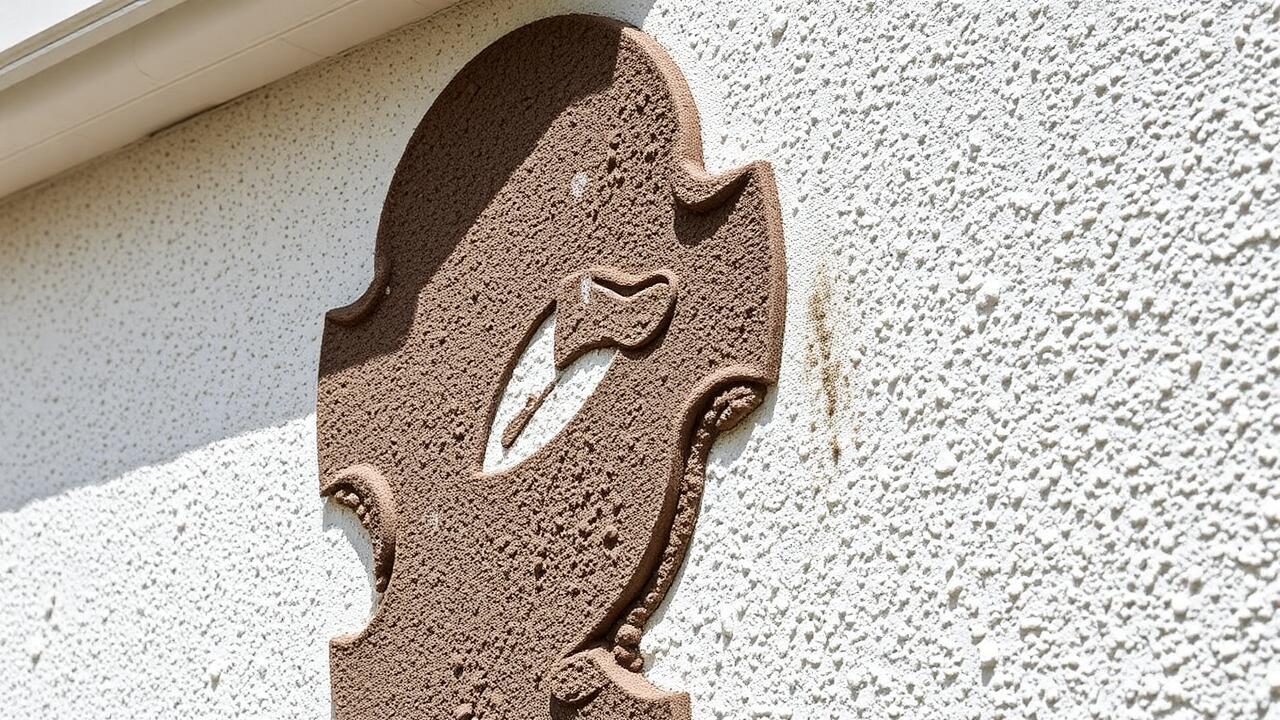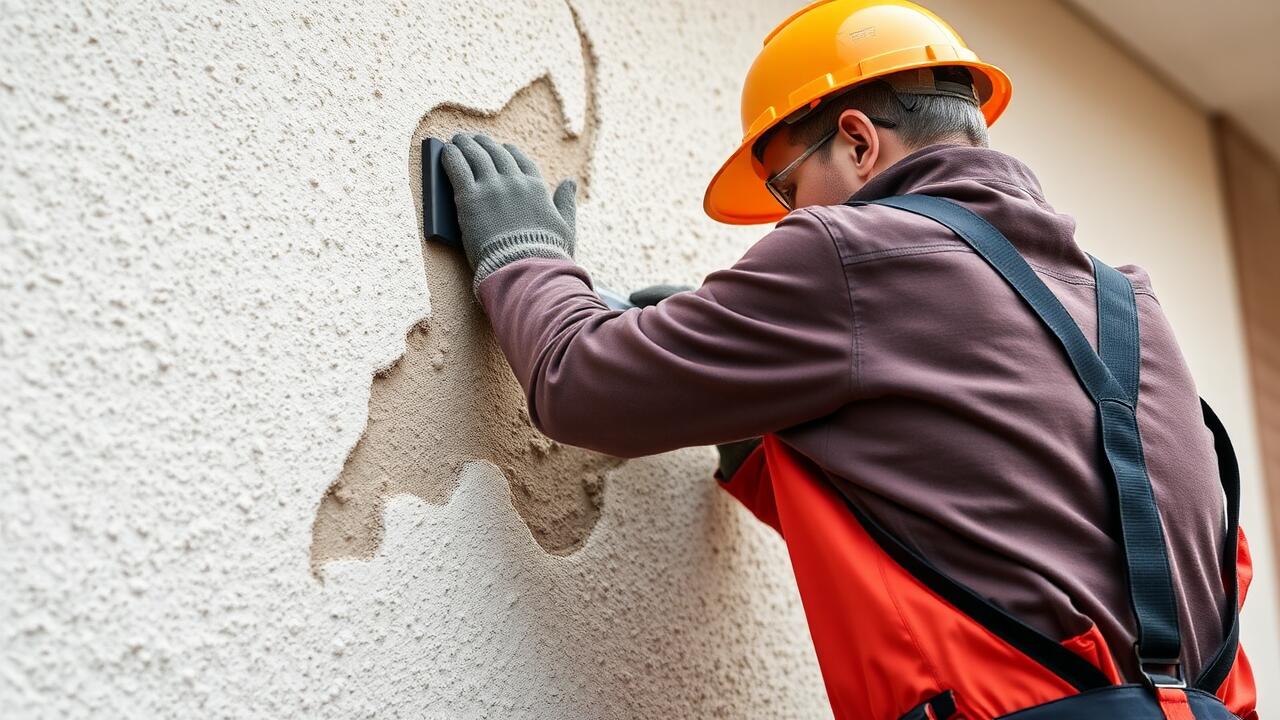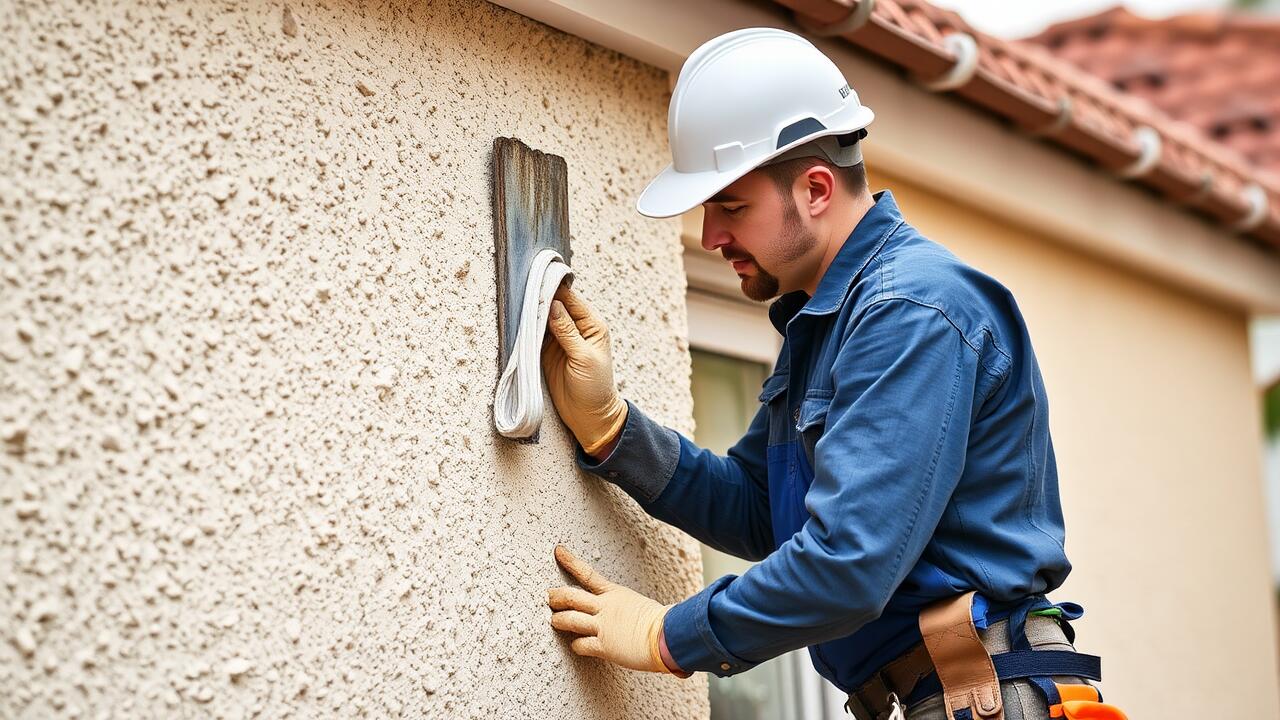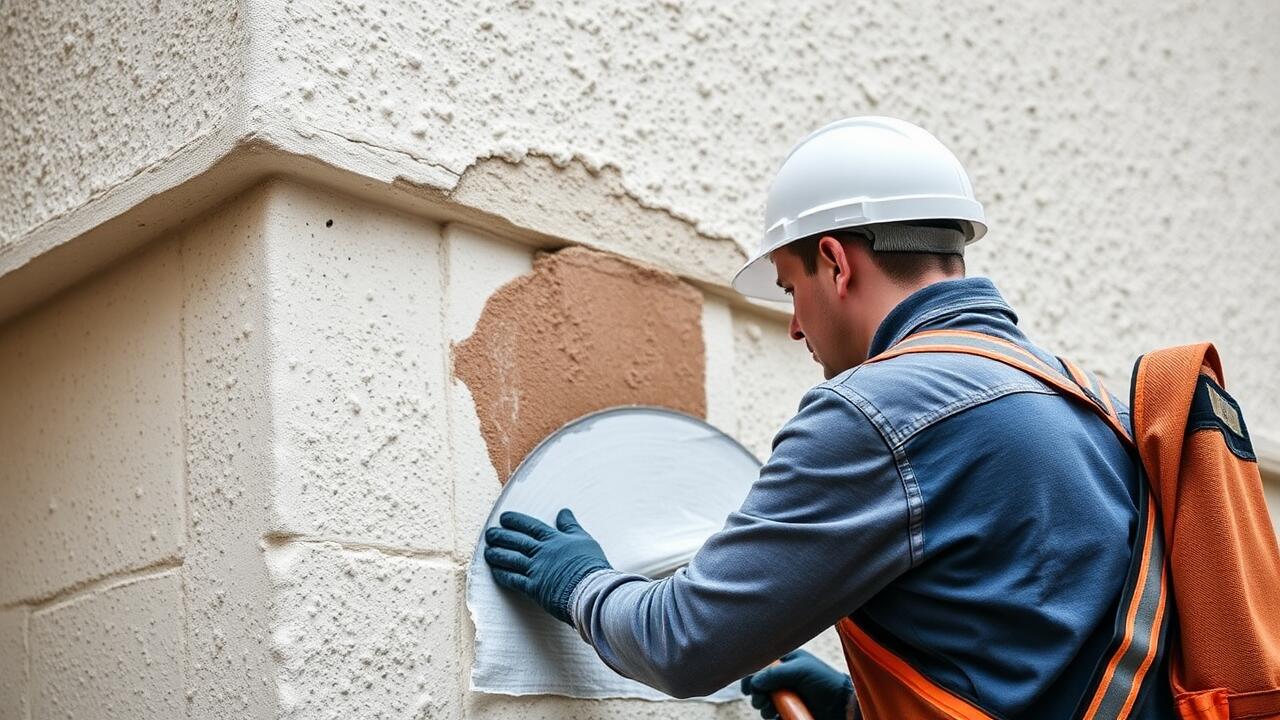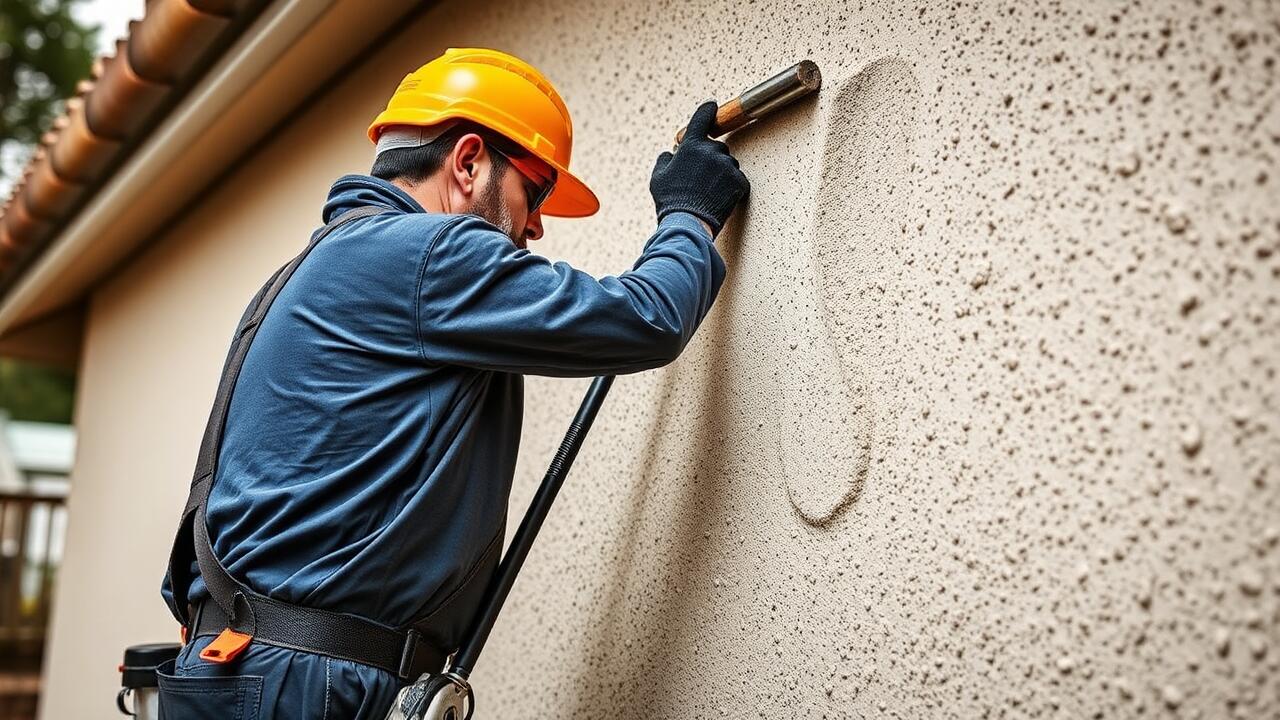
Applying the Repair
When addressing pitting and pockmarks in stucco, the first step is to thoroughly clean the damaged area. Use a wire brush to remove any loose debris or flaking paint. After cleaning, dampen the surface with a sponge or garden sprayer to ensure proper bonding with the repair material. This preparation sets the stage for a successful Stucco Repair in Van Nuys, Los Angeles.
Next, mix your stucco repair compound according to the manufacturer's instructions. Apply it generously, filling in the pockmarks and smoothing it out with a trowel. Press firmly to ensure that the material adheres well to the existing stucco. For deeper repairs, multiple layers may be necessary. Allow each layer to dry before applying the next one, ensuring a solid and durable finish.
Step-by-Step Guide for Patching Stucco
Begin by cleaning the damaged area thoroughly. Remove loose stucco pieces and any dirt to ensure proper adhesion of the patch. Use a wire brush or a putty knife for more stubborn debris. Once the surface is clean, dampen it slightly to help the new stucco bond with the existing material. Prepare your patching compound according to the manufacturer's instructions.
Apply the patching compound with a trowel, pressing it firmly into the damaged area. Build up the compound so it slightly exceeds the surrounding stucco surface. Smooth the edges to blend with the existing texture, ensuring an even application. For those seeking professional assistance, consider options such as Stucco Repair in Van Nuys, Los Angeles to ensure a high-quality finish.
Texturing for a Seamless Finish
Achieving a seamless finish after repairs to stucco is crucial for maintaining the aesthetic integrity of the surface. Various texturing techniques can be employed to replicate the original finish, whether it's a rough, textured look or a smooth appearance. Combining the right tools with the appropriate technique can make a significant difference. For instance, using a trowel or sponge can help imitate the existing patterns effectively.
When considering Stucco Repair in Van Nuys, Los Angeles, professionals often emphasize the importance of matching the existing texture. It's beneficial to test different methods on a small area before proceeding with the full application. The goal is to create a surface that blends well with the surrounding stucco. Experimenting with different textures and tools will ensure that the finished repair looks intentional rather than an afterthought.
Techniques to Match Surrounding Stucco
Matching the texture of the repaired area to the surrounding stucco is essential for a seamless finish. Begin by assessing the existing stucco for its texture, color, and pattern. Take note of whether it is smooth, rough, or has distinctive shapes. Use tools like a trowel, sponge, or brush to apply the final layer of patching material in a manner that mimics the original surface. This attention to detail ensures that the repaired sections blend effortlessly with the unblemished areas.
When considering color, it’s crucial to factor in how light interacts with the stucco. Mix paint samples to find the closest match to the surrounding stucco, testing them on small, inconspicuous sections first. After the repair and color matches are complete, the result should look coherent with the rest of your wall. Professional services specializing in stucco repair, such as those offering Stucco Repair in Van Nuys, Los Angeles, can provide expert guidance and execution for a flawless finish.
Painting the Repaired Area
Once the repair is complete and the texture has been blended, the next step is to paint the repaired area. Selecting the right paint is crucial for ensuring longevity and compatibility with your existing stucco surface. Look for a high-quality exterior acrylic latex paint, which provides excellent adhesion and durability against the elements. Opting for a paint designed specifically for stucco can enhance the finish and help protect against moisture damage.
When painting, it's important to closely match the color and sheen of the surrounding stucco. Take a sample of your existing stucco to a local paint store for color matching. Applying a primer can help achieve a uniform look and prevent peeling. For those in need of professional assistance, services like Stucco Repair in Van Nuys, Los Angeles, can provide expert help to ensure your repair looks seamless and lasts for years.
Selecting the Right Paint for Stucco
When it comes to painting stucco, choosing the right paint is crucial for achieving a durable and aesthetically pleasing result. Paint specifically designed for masonry surfaces is ideal, as it can withstand moisture and extreme weather conditions. Look for products labeled as breathable, allowing moisture from the wall to escape while preventing water damage. Additionally, consider paints with a satin or flat finish, as they tend to hide imperfections better and provide a more natural look.
For those engaging in Stucco Repair in Van Nuys, Los Angeles, selecting the right color is also important. The local climate can influence the choice of shade, with lighter colors reflecting heat and darker ones absorbing it, impacting energy efficiency. Take samples of various paint options to the repair site and observe them at different times of day to see how they interact with the sunlight and surroundings. This approach ensures a cohesive and polished finish that enhances the overall appearance of the repaired stucco.
FAQS
What causes pitting and pockmarks in stucco?
Pitting and pockmarks in stucco can be caused by a variety of factors, including moisture infiltration, freeze-thaw cycles, poor application techniques, or low-quality materials. Over time, these issues can lead to the deterioration of the stucco surface.
Can I repair pitting and pockmarks in stucco myself?
Yes, you can repair pitting and pockmarks in stucco yourself if you have the right tools and materials. Follow a step-by-step guide for patching stucco, and ensure you have the proper techniques for texturing and painting the repaired area for a seamless finish.
How do I match the texture of the repaired stucco to the surrounding area?
To match the texture of the repaired stucco to the surrounding area, you can use techniques such as sponge application, trowel or brush methods, or even specialized tools for stucco texturing. Practicing on a small area first can help ensure a successful match.
What type of paint should I use for painting repaired stucco?
When selecting paint for repaired stucco, it is recommended to use a high-quality exterior latex paint specifically formulated for masonry surfaces. This type of paint is durable and provides excellent adhesion, ensuring a long-lasting finish.
How long should I wait before painting over repaired stucco?
It is best to wait at least 24 to 48 hours after the repair is completed to allow the patch to fully cure and dry before applying paint. However, always check the manufacturer’s recommendations for the specific repair materials used.
